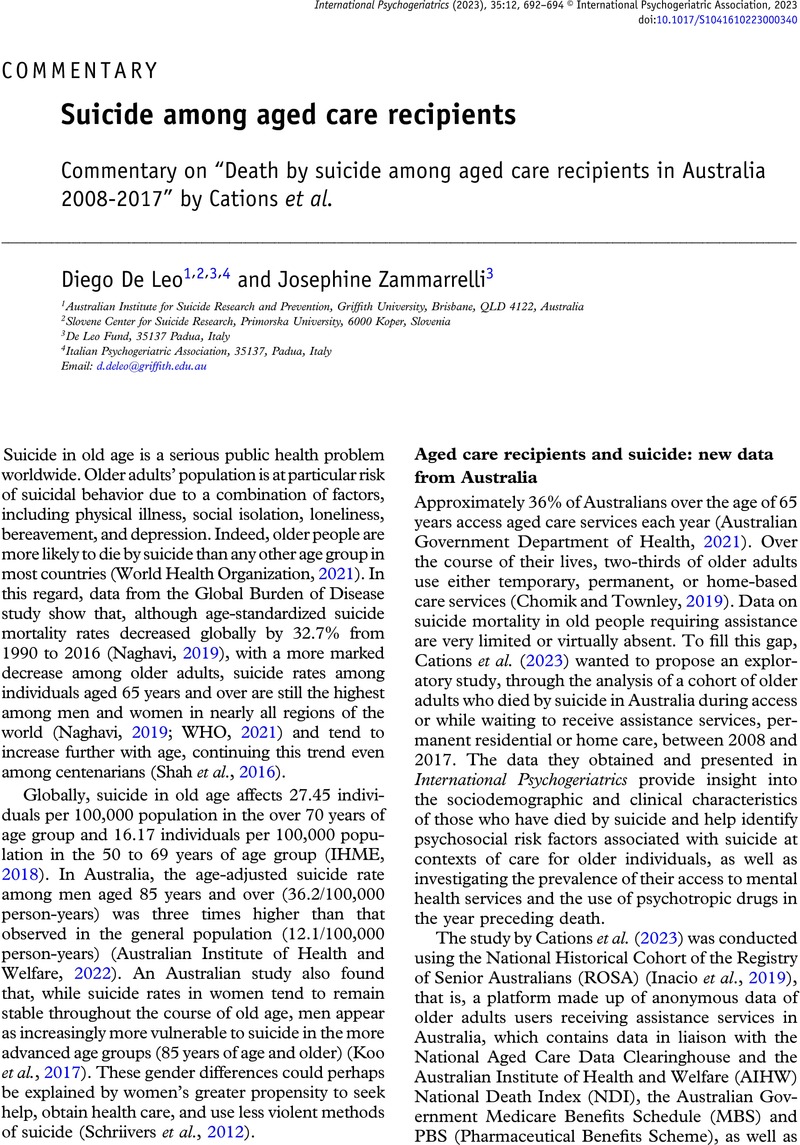Crossref Citations
This article has been cited by the following publications. This list is generated based on data provided by Crossref.
De Leo, Diego
Meda, Nicola
and
Zammarrelli, Josephine
2024.
Accident or intentional death? A case of certain uncertainty.
Aging Clinical and Experimental Research,
Vol. 36,
Issue. 1,



